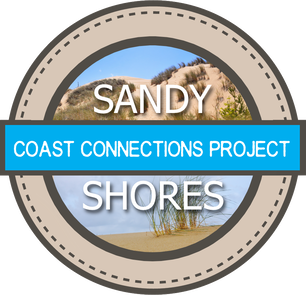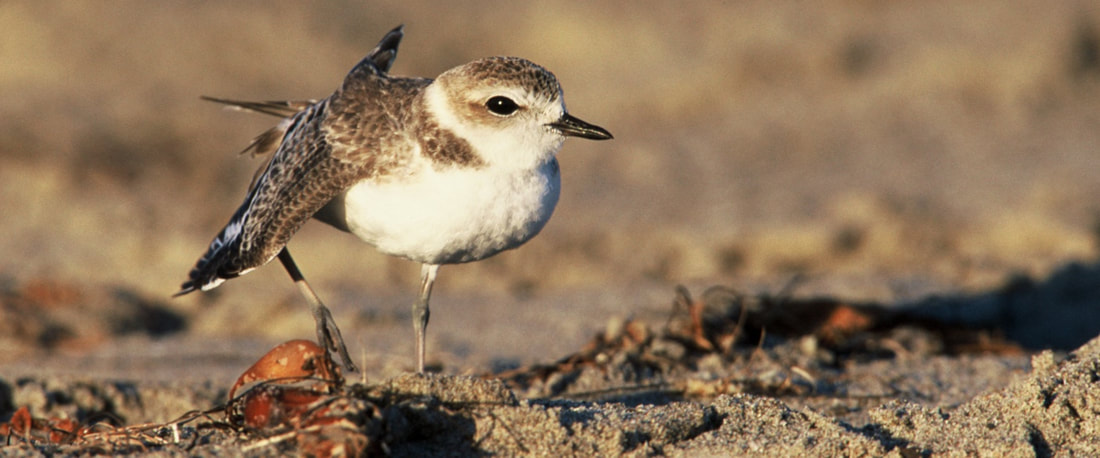Navigate:EDUCATE > COAST CONNECTIONS > SANDY SHORES Entry Events Driving Questions:
Authentic Projects for DQ1: Authentic Projects of DQ2: Authentic Projects of DQ3: |
Authentic Project 2: Recruitment DriveStudents develop and implement methods for encouraging the public to get involved in dune restoration projects.
Purpose: Oregon's dunes are ecologically, economically, and culturally important to Oregon. But they are also under threat. The dunes need volunteers from all walks of life to participate in conservation and restoration. This Authentic Project prompts students to recruit these volunteers and connect them to service projects near them. Authentic Audience: Members of the public will receive the final product(s). Community Partners will help students develop and distribute products. Group work: Assign groups of 3-4 students early in the project so they can begin to get to know one another. Have students work in these groups for all Learning Activities. You can assign students to different roles as follows, or have students determine their own roles and responsibilities:
See our Guide to Facilitating Student Group Work for more information. Teacher's Role: You are essentially the "Tracker" for all the groups and the liaison between students and Community Partners. Allow students to practice independent thinking and action, while providing the tools and guidance they need to be successful. And remember - success can be measured in many ways! If students learn to work cooperatively, develop excitement and proficiency in the subject material, and gain confidence in their own abilities to create positive change in the world, the project may be considered a success regardless of the outcome of the products. |
|
Student research materials;
Vertical Divider
|
Community Partners:
PREPARE FOR SUCCESS: Use our Guide to Working with Community Partners to contact and secure your partner(s) ASAP.
The Oregon Dunes Restoration Collaborative organizes restoration projects and education programs related to the dunes. To stay updated about current projects, go to https://www.saveoregondunes.org/volunteer/ and click "Sign up to receive emails". You'll then get alerts about upcoming work opportunities, community events, etc.
If you have specific questions about volunteer opportunities to help the Oregon dunes, contact Jeff Malik at
[email protected]. Jeff can also connect you with people who can visit your classroom, and/or help develop and review student products before they are released to the public. They may also be interested in distributing student products themselves.
To find other potential avenues to distribute student products, we encourage you to leverage any personal connections you may have in your community. Talk to the owners of your favorite local shop or restaurant. Ask the organizers of your Farmer's Market if students can set up a table for a few weekends.
If you need more ideas, check out the website for your local Chamber of Commerce for business listings and contact information.
The Oregon Dunes Restoration Collaborative organizes restoration projects and education programs related to the dunes. To stay updated about current projects, go to https://www.saveoregondunes.org/volunteer/ and click "Sign up to receive emails". You'll then get alerts about upcoming work opportunities, community events, etc.
If you have specific questions about volunteer opportunities to help the Oregon dunes, contact Jeff Malik at
[email protected]. Jeff can also connect you with people who can visit your classroom, and/or help develop and review student products before they are released to the public. They may also be interested in distributing student products themselves.
To find other potential avenues to distribute student products, we encourage you to leverage any personal connections you may have in your community. Talk to the owners of your favorite local shop or restaurant. Ask the organizers of your Farmer's Market if students can set up a table for a few weekends.
If you need more ideas, check out the website for your local Chamber of Commerce for business listings and contact information.
Learning Activities:
What are Oregon dunes like?
How can we make our recruitment campaign successful?
Ask each student group to investigate ONE of the below volunteer-driven projects (or another project you're aware of). Have students research these volunteer programs, how they are managed, roles that volunteers play, etc. Then, have each student group present their findings to the class.
Connect with nearby stewardship projects and partners
Help students reach out to local conservation groups to arrange an interview or invite them to participate in a panel at the school (see suggestions under the "Community Partners" section, or the groups researched in the activity above). Have students generate interview/panel questions to ask. Help students think through what they need to know to successfully complete their projects. Possible interview questions may include: How do you recruit volunteers? What are you biggest needs for volunteer work? What are your "dream projects" that you haven't yet been able to tackle?
Plan your campaign
Using the results from Activities 3 & 4 above, have each student group determine:
Execute and Recruit
- Flying Over Oregon's Dunes (from Oregon Coast Aquarium)
- Exploring the Oregon Dunes (28 min video)
- Briefly share the information in this article about how non-native plants have negatively impacted Oregon's dunes. Using the Restoring Oregon's Dunes book, share pictures of invasive European Beachgrass and compare it to pictures of dunes without invasive beachgrass.
- Play the Land of Many Opportunists Game. Use the provided discussion questions to review what they learned.
- Have each student choose one native Oregon dune species (that they saw on their field trip, or otherwise) and create a report or presentation to show how threats to the dunes may specifically impact it.
- Video: Wildlife tracking on the Oregon Dunes
How can we make our recruitment campaign successful?
Ask each student group to investigate ONE of the below volunteer-driven projects (or another project you're aware of). Have students research these volunteer programs, how they are managed, roles that volunteers play, etc. Then, have each student group present their findings to the class.
- EarthShare Oregon
- Hands On Portland
- Oregon Wild
- Oregon Nature Conservancy
- Oregon Department of Fish and Wildlife (ODFW)
- Oregon Shores Conservation Coalition
- The Planetary Society
- Washington Center for the Performing Arts
Connect with nearby stewardship projects and partners
Help students reach out to local conservation groups to arrange an interview or invite them to participate in a panel at the school (see suggestions under the "Community Partners" section, or the groups researched in the activity above). Have students generate interview/panel questions to ask. Help students think through what they need to know to successfully complete their projects. Possible interview questions may include: How do you recruit volunteers? What are you biggest needs for volunteer work? What are your "dream projects" that you haven't yet been able to tackle?
Plan your campaign
Using the results from Activities 3 & 4 above, have each student group determine:
- What project(s) will volunteers participate in?
- Be sure this reflects the organization's needs and capabilities! You will want to propose student ideas to the targeted Community Partner[s] to ensure that projects are welcome and feasible.
- What type(s) of materials will we create to recruit volunteers? (i.e. radio spots, flyers, videos, social media campaigns, tabling at events, etc.)
- How will we know if our campaign is successful?
Execute and Recruit
- Facilitate the creation of recruitment materials. If possible, arrange a mid-way visit from the Community Partner(s) to check in and provide encouragement, support, and constructive criticisms.
- Help students distribute their final products to the targeted Authentic Audience(s). Use the benchmarks developed by students in Activity 5 above to help students determine how successful their campaigns were. Then, have students generate ideas about how they could improve their success or what they would change if they did the project again.
Field Trips:
Go on a field trip to a local beach with dunes (see the Field Trip Sites section on Page 2). Using the Handbook of Sandy
Shore Organisms:
Additional field trip option: Visit the Oregon Coast Aquarium and spend time in the Sandy Shores Gallery. Encourage students to observe the adaptations that help these animals survive and make them special.
Shore Organisms:
- Observe and identify any species you see.
- Discuss how they are adapted to live in the dunes.
- Encourage students to think about whether each species would be able to survive if the dunes changed or disappeared.
- Discuss which species could be used to interest people in the dunes.
Additional field trip option: Visit the Oregon Coast Aquarium and spend time in the Sandy Shores Gallery. Encourage students to observe the adaptations that help these animals survive and make them special.




